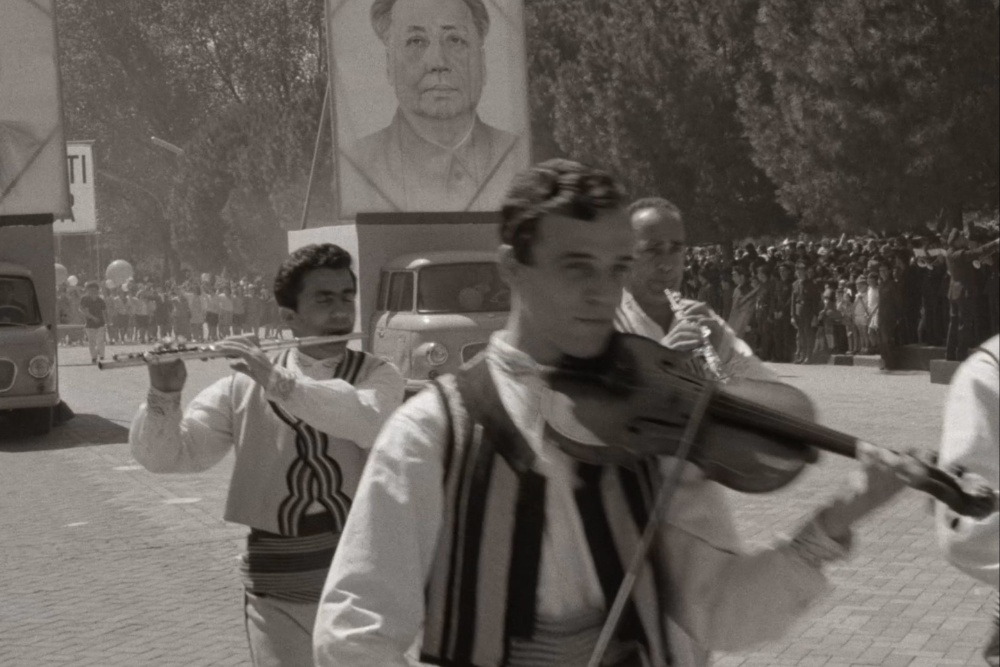
Exploring the Power of Image and Myth in "A State Film"
Roland Sejko's documentary, "A State Film," offers a compelling examination of how images can shape and manipulate collective memory. Drawn from a vast collection of state-produced footage under the rule of Albanian leader Enver Hoxha, the film delves into the mechanisms of propaganda and the ways in which visual narratives are constructed to serve political purposes.
The documentary was showcased at the Ji.hlava International Documentary Film Festival, one of the most prominent events for nonfiction cinema in the Czech Republic. Sejko, who has spent years working with propaganda archives, including those from the Italian Istituto Luce Cinecitta and the Albanian communist regime, highlights the cinematic ambition behind these films. He notes that both archives contain thousands of films created to construct specific political narratives.
Sejko’s previous work, "The Image Machine of Alfredo C.," explored the role of a cameraman who documented fascist and communist regimes. This experience led him to realize that the Albanian film archive, particularly the legacy of Enver Hoxha, had never been fully explored through its own images. As an archivist and head of the editorial department for Cinecitta Luce, he embarked on a project to analyze and curate these decades of state propaganda.
The Albanian propaganda newsreels and documentaries reflect the influence of Eastern Bloc cinematography. The first Albanian camera operators were trained by Soviet masters, such as Roman Karmen, known for his coverage of revolutions and wars. Despite the absence of formal guidelines for propaganda filmmaking, there was an invisible structure governing the imagery. Parades, for example, in communist Albania bear a striking resemblance to those in Moscow, Bucharest, or Sofia during the same period.
The footage in "A State Film" includes scenes of cheering workers, dancing girls in traditional attire, and grand displays of loyalty to the state. These images evoke a sense of collective joy, but they also reveal the underlying control exerted by Hoxha. The film captures the era when Albanians were urged to obey government laws while honoring the sacrifices of heroes. It also highlights Hoxha's admiration for Stalin and Yugoslav leader Josip Broz Tito.
Massive portraits of these leaders are shown being carried through streets, with crowds displaying their devotion through symbolic gestures like wheelbarrows, shovels, and carbines. Industrial progress is celebrated, and defensive bunkers—of which Hoxha built hundreds of thousands—are tested to demonstrate readiness against Western imperialist forces. Even animals like dogs and guinea pigs are used in experiments to assess exposure to potential gas attacks.
Throughout the film, patriotic songs play a central role, reinforcing the ideological message. However, Sejko made a deliberate choice to strip away the original soundtrack, replacing it with natural sounds such as wind, birds, and footsteps. This approach removes the prescriptive voice of the narrator, allowing the audience to engage with the footage more authentically.
By preserving only the real sounds—applause, songs, and speeches—Sejko creates a new soundscape that emphasizes the physicality of the images. This technique transforms sound into a narrative tool, inviting viewers to interpret the footage without imposed guidance.
In addition to the public parades, the film also includes private moments from Hoxha’s personal archive, showing him driving in his favorite black Mercedes. These glimpses contrast sharply with the public displays of unity, suggesting the isolation and loneliness that often accompany power.
Sejko believes that "A State Film" raises important questions about the evolution of propaganda and the persistence of its classic tropes in modern times. The film challenges viewers to reflect on how images continue to shape political narratives and collective memory.
Ultimately, "A State Film" demonstrates that archives are not just collections of images but powerful tools for interpreting and reinterpreting history. The chilling portrayal of carefully staged scenes transcends national boundaries, offering a broader commentary on the role of visual media in politics. Through this work, Sejko invites audiences to consider the enduring impact of images on society and the ways in which they can be used to construct reality.

Post a Comment